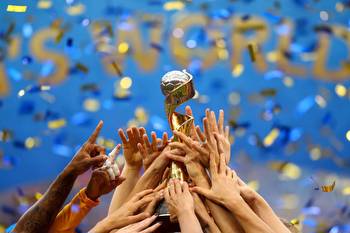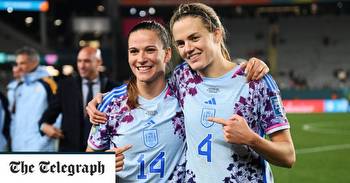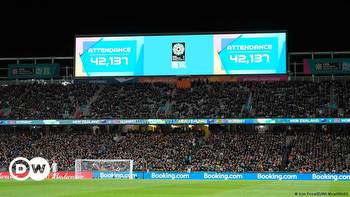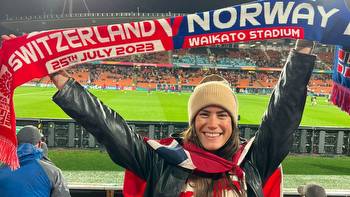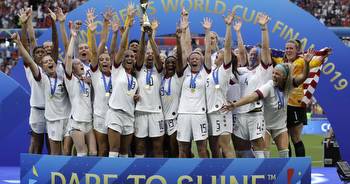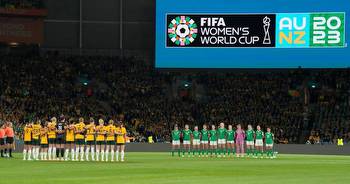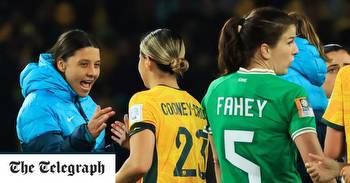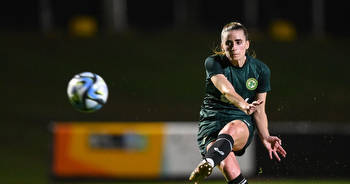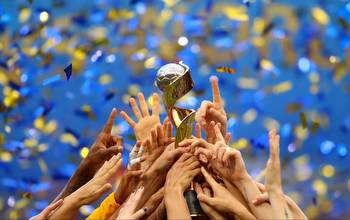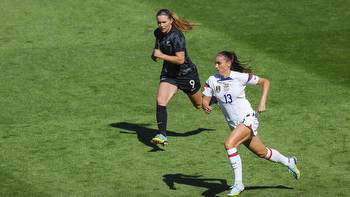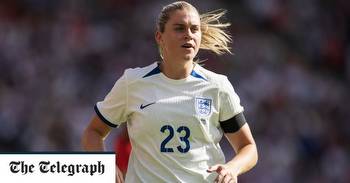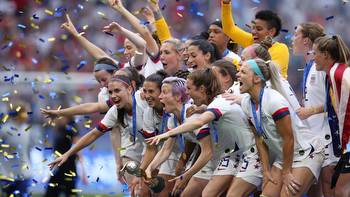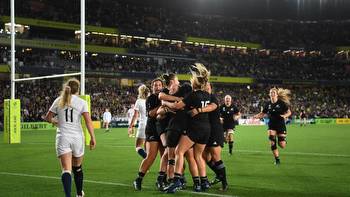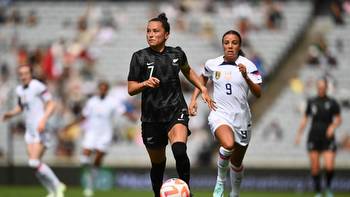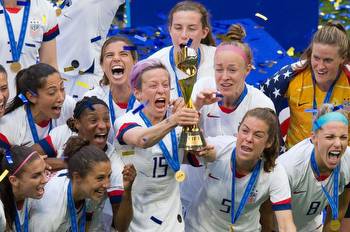Why the FIFA Women’s World Cup is NZ’s greatest show on turf
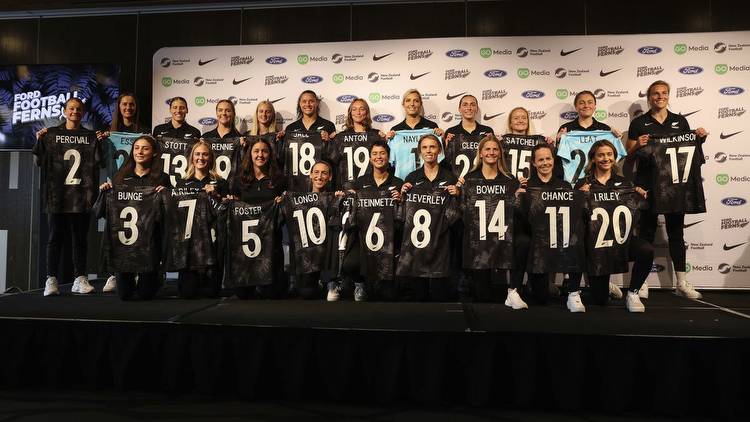
It’s not quite the greatest show on Earth but the Fédération Internationale de Football Association (Fifa) Women’s World Cup that gets under way in Auckland and Sydney on July 20 is certainly one of themost significant events on the international sporting calendar.
And given New Zealand’s disadvantages when it comes to staging such events – market size, geographical isolation, time zone – it may be some time before we next host a comparable extravaganza.
The Summer Olympic Games and the Fifa Men’s World Cup are, by some distance, the biggest deals in sport. There are plenty of aspirants for the bronze medal, all with an array of rubbery numbers and woolly assertions to bolster their claims. For instance, the Tour de France, which lasts more than three weeks, boasts an international viewing audience of 3.5 billion, but are these viewers who spend hours glued to the action? Or are they merely members of a household into which the nightly news, perhaps featuring a blink-and-you’ll-miss-it clip of a 50-bike pile-up in the foothills of the Pyrenees, is beamed?
This tournament will supposedly surpass the 2011 (men’s) Rugby World Cup, of which New Zealand was the sole host, to be the biggest sporting event ever held on these shores. To put that in perspective, the 2015 Global Sports Impact Project ranked 700 events over the preceding 12 years on the usual criteria – tickets sold, global audience – and less tangible considerations such as social benefits: the 2011 Rugby World Cup came in fourth behind the 2012 London Olympics, 2012 Paralympics and the 2014 Fifa (men’s) World Cup in Brazil.
It’s the world’s biggest women’s sports event. The final of the 2019 tournament in France attracted 14.3 million viewers, 22% more than the 2018 men’s final. Fifa estimates almost 30,000 overseas fans, most from the United States, will descend on New Zealand, exceeding the 2017 British and Irish Lions’ exuberant fan following. The nation’s brewers, though, shouldn’t count on a repeat of their 2017 windfall.
Tellingly, on July 15 the All Blacks play the Springboks at Mt Smart Stadium, home to the Warriors, rather than at their Eden Park stronghold. They’ve had to make way for the women since one of Fifa’s many non-negotiables when it comes to hosting rights is exclusive access to stadiums.
The organisers may be experiencing flutters of anxiety over whether New Zealanders will truly embrace the event given only four cities – Auckland, Hamilton, Wellington and Dunedin – will stage games and our team, the Football Ferns, are expected to be bit players. Last year, the public was gripped by the women’s Rugby World Cup, but that had a lot to do with the Black Ferns who rebounded from a disastrous and acrimonious European foray in late 2021 to not merely win but win with style and smiles on their faces.
Hopefully, the 1987 inaugural men’s Rugby World Cup, which New Zealand and Australia also co-hosted, will be the precedent. While rugby is the national game, its blinkered dalliance with pariah nation South Africa, culminating in the rancorous civil strife of the 1981 Springbok tour, had alienated swathes of the community.
Furthermore, the World Cup was an untested and undersold concept – Eden Park was barely half full for the opening game between the All Blacks and Italy – so there was concern Kiwis wouldn’t cross the road to watch matches between the likes of Romania and Zimbabwe.
As it transpired, the tournament emphatically captured the public’s imagination. (It helped that the rugby community had, by and large, finally come to their senses over South Africa and that the All Blacks were 20 points better than the next best team.) With New Zealand hosting teams from the Philippines, Costa Rica, Zambia and Vietnam, the upcoming tournament promises exoticism and underdog narratives.
The first men’s World Cup took place in 1930 – hosts Uruguay defeated neighbour Argentina in the final – yet more than half a century would pass before the inaugural women’s tournament was staged in China in 1991. (Unofficial tournaments were played in the 1970s and 80s but it would have been a stretch to call those events World Cups since in some parts of the world women were banned from playing the game.) China and the US have both hosted the event twice, the other hosts being Canada, France, Germany and Sweden.
Nine countries expressed an interest in hosting this year’s tournament, with Australia and New Zealand initially going it alone and North and South Korea signalling a joint bid. Several nations dropped out of the reckoning while Australia and New Zealand combined. Brazil and Japan withdrew shortly before the June 2020 vote leaving the Antipodeans up against Colombia.
The 22-13 vote in favour of the joint bid meant the tournament would be staged in the Southern Hemisphere for the first time. It’s also the first time a senior Fifa event has taken place in the Oceania confederation. Any residual sympathy for Colombia surely dissipated after the Colombian team’s shameful display at last year’s men’s World Cup in Qatar, holding up their pool game against England for minutes on end as they menaced and harangued the referee over a penalty call.
Fifa is anticipating a two billion-plus global audience but it wasn’t until late in the day that a deal was struck over broadcasting rights in five Western European countries that make up 35% of that audience. In a revealing example of how talk is cheap when it comes to gender equality in sport, broadcasters in France, Germany, Italy, Spain and the UK submitted derisory offers – in some cases, according to Fifa, 2% of what they were prepared to pay for last year’s men’s tournament.
The broadcasters cited the problematic time differences, something Southern Hemisphere sports fans long ago accepted as a fact of life, and dismissed Fifa’s occupation of the moral high ground as hypocrisy: historically the governing body has marketed broadcasting rights to the two World Cups on a “buy one, get one virtually free” basis. No prizes for guessing which was the giveaway.
Prodded by the relevant ministers in the five countries, the proverbial 11th hour deal was struck, as one always expected it would be. No doubt some of the foot-dragging was tactical but it’s hard to believe negotiations over the men’s World Cup are undertaken with such lack of urgency.
Total prize money has increased to US$110 million ($180 million) – up US$80 million from what was on offer at the 2019 tournament. In Qatar the men’s teams competed for US$440 million. Fifa has committed to having equal prize money for the next tournaments, in 2026 (men’s) and 2027 (women’s).
The success of the 2015 and 2019 tournaments prompted Fifa to extend the format from 24 to 32 teams – eight pools of four – the model adopted for the men’s World Cup in 1998. The pools are:
A New Zealand, Norway, Philippines, Switzerland.
B Australia, Canada, Nigeria, Republic of Ireland.
C Costa Rica, Japan, Spain, Zambia.
D China, Denmark, England, Haiti.
E Netherlands, Portugal, United States, Vietnam.
F Brazil, France, Jamaica, Panama.
G Argentina, Italy, South Africa, Sweden.
H Colombia, Germany, Morocco, South Korea.
Pools A, C, E and G will be based in New Zealand, the others in Australia. Haiti, Morocco, Panama, Philippines, Portugal, Republic of Ireland, Vietnam and Zambia are making their World Cup debuts.
In the round-robin phase, each team play the others in their pool with the top two teams from each pool progressing to the Round of 16. From then on, it’s knockout: lose and you go home. Auckland and Wellington will host quarter-finals and Auckland a semi-final. The other semi-final, the bronze medal game and the final will be played in Australia.
The draw has distributed talent across the eight pools. This may seem like mere common sense but World Rugby has pulled off the staggering feat of putting the top four teams on the same side of the draw for the (men’s) Rugby World Cup in France later this year, thereby ensuring that two of them can’t progress beyond the quarter-finals. (Mood spoiler alert: the All Blacks are one of those four teams.)
Seven pools contain a previous World Cup winner or finalist. The exception, B, has reigning Olympic champion Canada and justifiably ambitious co-host Australia, the 11th-ranked team in the world. The careful seeding process may, however, make pool action and outcomes a little predictable.
In Pool A, for instance, 12th-ranked Norway, who contested the 1991 final and were champions four years later, should go through, especially now that they’ve regained the services of Ada Hegerberg. Anointed the best women’s player in the world in 2018, Hegerberg shunned international competition for five years in protest at the Norwegian Football Federation’s treatment of the national women’s team. The 26th-ranked Football Ferns’ clash with Switzerland (20) in Dunedin on July 30 will probably determine who accompanies Norway to the Round of 16.
Australia and Canada look strong in Pool B. Spain should go through from Pool C, despite missing 15 players who apparently can’t abide coach Jorge Vilda, as should 2011 champions Japan.
European champions England should cruise out of Pool D leaving Denmark (13) and China (14) to compete for the other spot. The Danish campaign will be spearheaded by one of the more remarkable figures in world sport: Nadia Nadim fled Afghanistan as a child after her father, a general, was killed by the Taliban. In addition to being the all-time sixth-highest goal scorer for the Danish women’s team, Nadim has a medical degree – she plans to specialise in reconstructive surgery when she stops playing – and speaks eight, nine or 11 languages, depending on who’s telling the story.
The match-up between women’s soccer superpower US and the Netherlands (9) will be one of the best of the round-robin phase but both should progress from Pool E regardless of the result. Rather than making themselves unavailable like the 15 Spaniards, the French players engineered their coach’s sacking a few months ago. Nevertheless, fifth-ranked France and Brazil (8) look likely to emerge from Pool F as Sweden (3) and Italy (16) do from Pool G.
While 72nd-ranked Morocco will draw inspiration from their male counterparts’ stirring campaign in Qatar last year, in Pool H South Korea (17) and Colombia (25) seem likely to vie for the right to accompany European runners-up Germany to the knockout phase.
Kiwis invariably punch above their weight in international sport and revel in their self-image of the little nation that can, but in reality the Football Ferns are long shots (see story opposite). The other side of the coin is it frees us up to choose a second team to support. While many will baulk at the notion of supporting the favourites, especially when they are the Americans and there are plenty of underdogs to choose from, Team US have the appeal and distinction of being high on former president Donald Trump’s apparently endless hate list.
They are also in the front line of the fight for equal pay: after six years of litigation, they reached an agreement on pay parity, including US$24 million in back pay, and the elimination of discrimination over travel arrangements.
It’s sobering that it took six years given the women’s team have generated more income for the US Soccer Federation than the men’s despite playing for far smaller prize money pools. (The winners of this tournament will put US$4.29 million into their governing body’s coffers.)
Veteran winger Megan Rapinoe has become a progressive icon, last year receiving the Presidential Medal of Freedom from President Joe Biden. (Such is the status of the American women’s team, on one side of the political divide anyway, that their social media World Cup squad announcement was introduced by Biden and wife Jill.)
Rapinoe prided herself on being a “walking protest when it comes to the Trump administration”, describing Trump as “sexist, misogynistic, small-minded, racist and not a good person”. Asked during the 2019 World Cup if she was looking forward to being received at the White House post-tournament, she memorably growled, “I’m not going to the fucking White House.”
For his part, Trump has let the venom flow since leaving office, rejoicing in Team US’s semi-final loss at the Tokyo Olympics and encouraging the crowd at an Arizona rally to boo the players whom he labelled “a bunch of leftist maniacs”.
Rapinoe was one of a group of players, including fellow US star Alex Morgan and Netherlands striker Vivianne Miedema, who were outspoken in their opposition to the tourism arm of the Saudi Arabian government’s proposed involvement with the tournament.
If it wasn’t for Fifa’s murky track record, it would defy belief that for a moment the organisation contemplated partnering its flagship women’s event with a country that subjugates females. Eventually Fifa heeded the opposition from players and the co-host nations.
Saudi Arabia’s lavish and relentless sportswashing campaign (In the sand, April 8) seems predicated on the belief that every man has his price. Recent events in golf suggest it isn’t an unreasonable assumption. The Saudis found out, however, that women are less inclined to avert their eyes.


